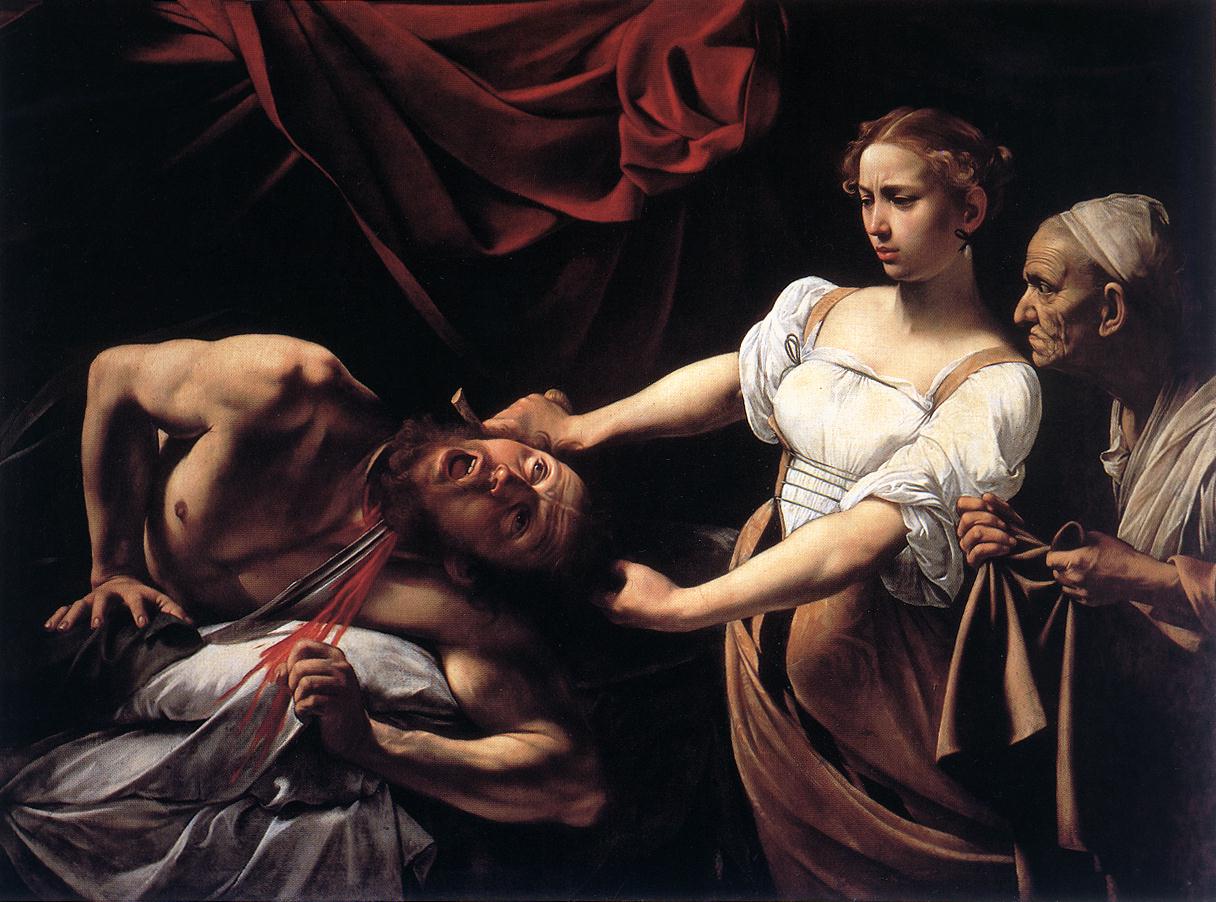The Dijion Nativity by Robert Campin is an example of several nativity stories melded into one. Campin pulled from the canonical gospel of Luke, the non-canonical gospels of Pseudo-James and Pseudo-Matthew, and the popular (at the time) vision of Saint Bridget of Sweden.
 |
| Dijion Nativity, Robert Campin, c. 1420 |
 |
| Shepherds from Portinari Altarpiece, Hugo van der Goes, c. 1475 |
The two women to the right of the painting come from the writings of Pseudo-James. The one kneeling is the midwife who helped with the birth of Jesus (which occurred in a cave in this version.) When she discerned that Mary was still a virgin, she ran to share her surprise with the second woman, named Salome. Salome refused to believe without proof, and is punished for her skepticism as fire begins to burn her hand. An angel tells her to bring her hand to Jesus, and in his presence she is cured. This small miracle is insinuated by the way the second woman holds her limp hand as if it had been injured.
The ox and the donkey are now a staple in any manger scene, but they actually originated from the non-canonical gospel of Pseudo-Matthew. The passage reads, "The ox knoweth his owner, and the ass his
master’s crib. The very animals, therefore, the ox and the ass, having Him in
their midst, incessantly adored Him.” While these farm animals are familiar to a modern viewer, the placement of the infant Jesus on the ground probably seems strange. Where is the manger? Where are his swaddling clothes? The Dijion Nativity like the Portinari Altarpiece, pulls some details from the vision of St. Bridget of Sweden. Her writings describe Mary's white mantel and golden hair, the ox and the ass, the singing of angels, and Jesus naked and shining on the ground. Angels play an important role in many infancy gospels (especially in the annunciation,) which explains their presence in these paintings.
 |
| Adoration,Gentile de Fabriano, 1423 |
Both of these paintings are missing one of the other, key theological details of a nativity scene - the magi. The magi play a prominent role in the Gospel of
Mathew and are present in Pseudo-James. Biblically, the magi (wise-men, kings,
etc.) are not numbered. There could have been dozens of magi, each with an
entourage of hundreds. Some artists had fun with this idea, like Gentile de Fabriano in his Adoration. The magi gave artists the opportunity to paint lavishness and opulence.
Theology and tradition pared the magi down to three men.
The number three was chosen because the Bible does mention the three gifts of
frankincense, gold, and myrrh. The Church leaders decided that one gift would
come from each king, and they were all named and given physical descriptions.
Balthazar was the young, African king. Casper was a middle-aged, "Asian" king. And Melchior was an older, European king. The kings were from each of the three
known continents as a statement that the whole world was at the feet of the savior
Jesus Christ.
 |
| Adoration, Paolo Veronese, 1570 |
 |
| Adoration, Andrea Mantegna, 1500 |
In the 1400s and 1500s (the early Renaissance,) the Church was the main patron of art. The illiterate masses learned most of their theology from art. Artists had to know all the Bible stories
front-to-back regardless of canon. They pulled the relevant information form each story to create iconography that could successfully teach the desired message of their religious patrons. The visual traditions they created over 500 years ago continue to influence the way we learn and remember the story of Christmas today.
Resources:
Doot Bokelman and Prof. Kelly, "The Church and Art" (lecture, Nazareth College, Rochester, NY, Fall 2012)
Resources:
Doot Bokelman and Prof. Kelly, "The Church and Art" (lecture, Nazareth College, Rochester, NY, Fall 2012)









.jpg)



